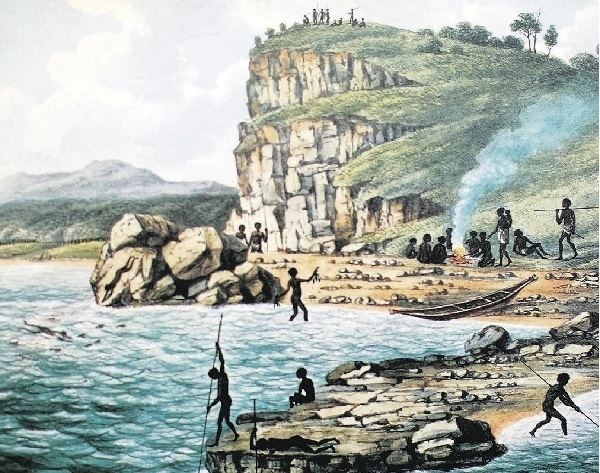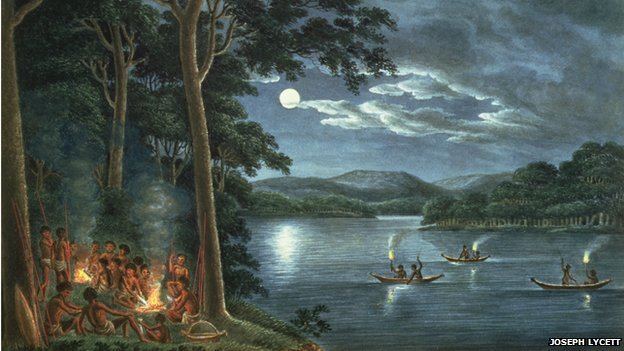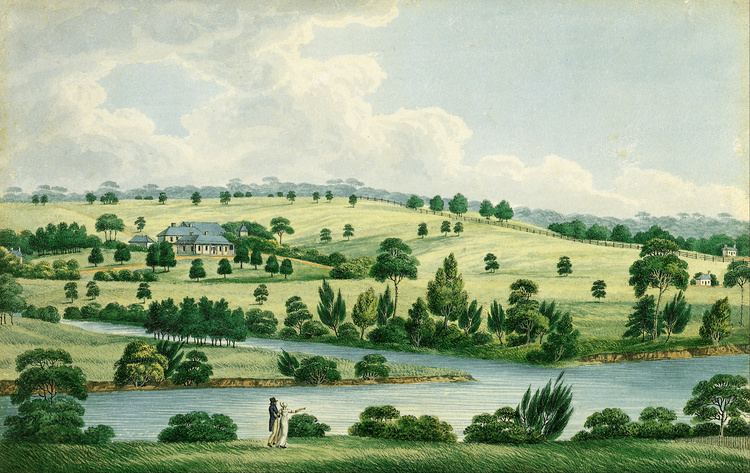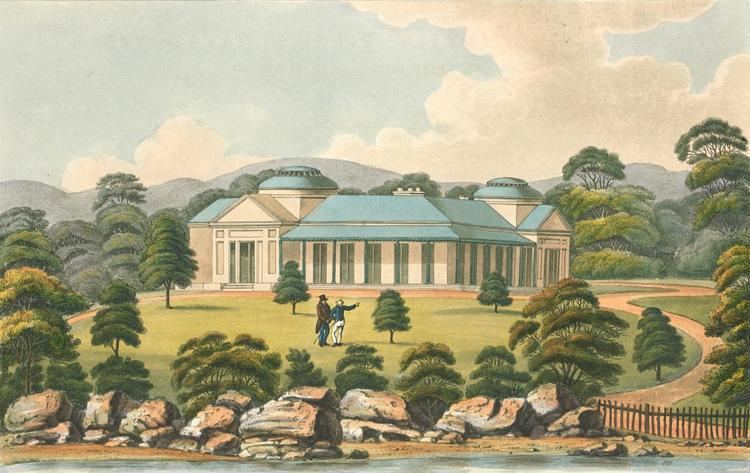Cause of death Allegedly suicide | Children Possibly 2 daughters Name Joseph Lycett | |
 | ||
Occupation Convict portrait and miniature painter Died 1825, Birmingham, United Kingdom | ||
Paintings of convict artist joseph lycett digital classroom nla
Joseph Lycett (c.1774 – c.1825) was a portrait and miniature painter, active in Australia. Lycett specialised in topographical views of the major towns of Australia, and some of its more dramatic landscapes.
Contents
- Paintings of convict artist joseph lycett digital classroom nla
- Early life
- Newcastle
- Collectors Chests
- Sydney
- Views in Australia
- Death
- References

Early life

Lycett was born in Staffordshire, England, where he became a botanical artist.
Newcastle

Lycett was convicted of forgery on 10 August 1811 and was transported to Australia, sailing aboard the General Hewitt, arriving in 1814. In May 1815 while Lycett was employed in the police office, Sydney was flooded by hundreds of skillfully forged 5 shilling bills drawn on the postmaster. They were traced to Lycett, who was found in possession of a small copper-plate press. Lycett was sent to Newcastle, where he came to the attention of the commandant of the settlement, Captain James Wallis. Lycett drew up the plans for a church which Wallis projected and, when it was built in 1818, he painted the altar piece; he is said to have also produced the three-light window which still survives in the bishop's vestry of Newcastle Cathedral. On the recommendation of Captain Wallis, the commandant, Lycett was given a conditional pardon.
Collectors' Chests

Captain James Wallis also involved Lycett in the design of two cedar and rosewood timber chests displaying natural history specimens from the Newcastle area. Lycett was responsible for painting eight of the twelve panels on these chests which depict views of Newcastle as well as copies of William Westall's Views of Australian Scenery. It is strongly believed that Wallis presented one of these chests to Governor Lachlan Macquarie as a gift around the year of 1818. The other chest's initial provenance is unknown, but it was purchased by William Dixson in London in 1937 and later bequeathed to the State Library of New South Wales where Macquarie's chest is also held.
Sydney
Lycett returned to Sydney and was allowed to practice his art, and in 1820 Governor Macquarie sent three of his paintings including a large view of Sydney to Earl Bathurst. It is generally believed that the absolute pardon which the Lycett received on 28 November 1821 was a reward for these. Many of his patrons seem to have been drawn from the military and public service elite, and included Commissioner John Thomas Bigge (who described Lycett's 'habits of intoxication' were 'fixed and incurable'), his secretary Thomas Hobbes Scott, and Macquarie's aide-de-camp John Watts.
Lycett had possibly married in the colony, for in June 1822 he advertised that he intended to leave accompanied by his two daughters. They sailed together in the Shipley in September.
Views in Australia
Although his later publication Views in Australia suggests Lycett also visited Tasmania, there is no evidence of his actually travelling there. He returned to England in September 1822, having been granted an absolute pardon. With publisher John Souter, between July 1824 and June 1825 he issued Views in Australia, or New South Wales and Van Diemens Land in 12 parts published monthly, each with two aquatint views of New South Wales and two of Van Diemen's Land, with descriptive letterpress, and a supplement with maps of both colonies. By permission the series was dedicated to Bathurst. The parts began to appear in July 1824 at 7s. plain and 10s. 6d. coloured. With its complicated publishing history, the extent of Lycett's involvement in the entire production is unclear, and it does seem that the book was not successful. These views were reissued in a volume in 1825. The 50 plates are coloured in some copies and plain in others.
Death
Lycett died in Birmingham in or about 1825. A penciled note in a copy of his Views in the State Library of New South Wales, states that, when he was living near Bath, he was again arrested for forgery of some notes on the Stourbridge Bank. On being arrested he cut his throat, and when recovering in hospital he tore open the wound and killed himself. However, this is not confirmed.
